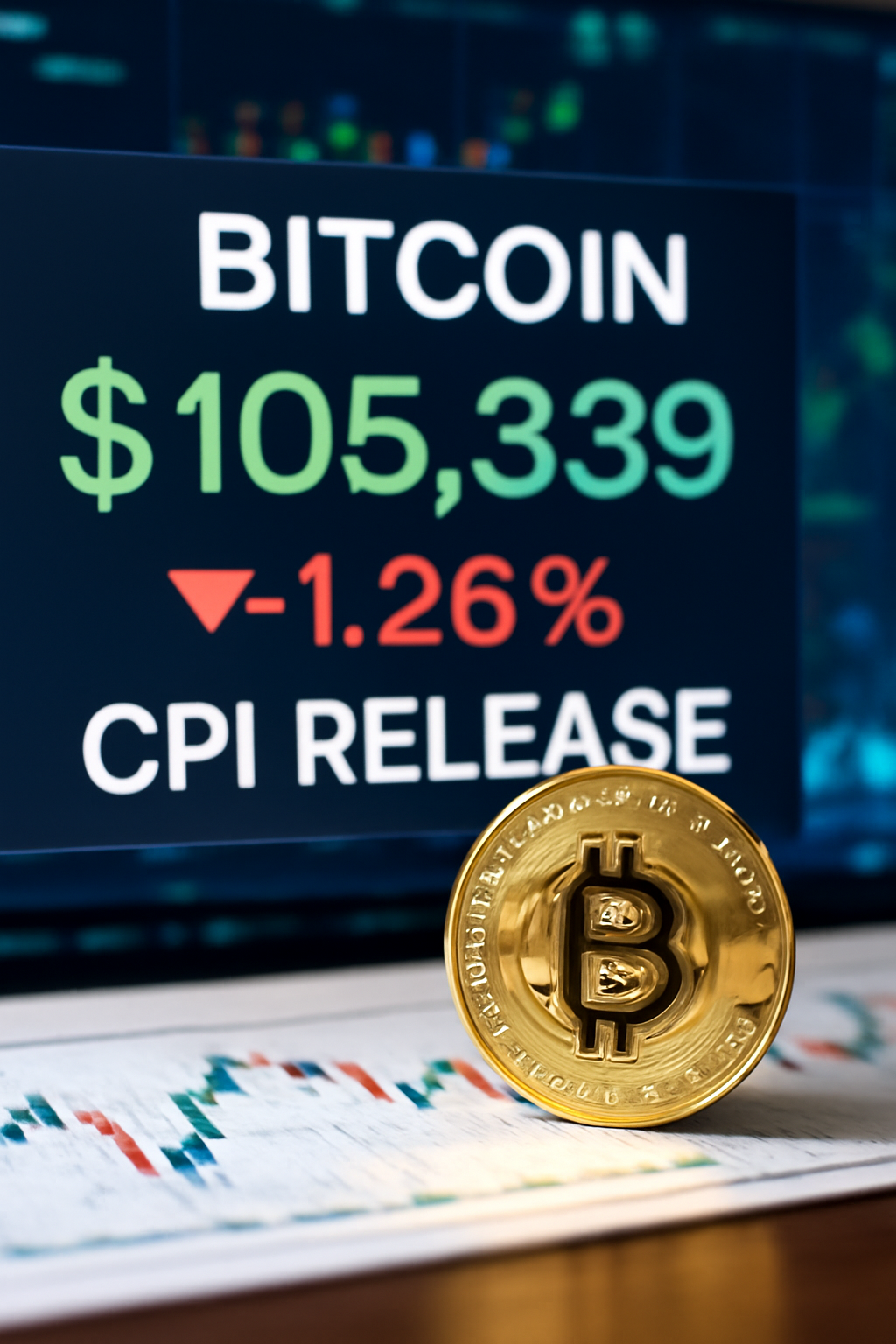Ethereum (ETH), the second-largest cryptocurrency by market capitalization, has recently climbed past the $2,540 mark, an impressive surge that has caught the attention of both retail and institutional investors. This price movement, marking a significant milestone in Ethereum’s journey, is primarily attributed to a sharp increase in demand for Ethereum-based Exchange-Traded Funds (ETFs). The surge reflects growing institutional adoption and market confidence, suggesting that Ethereum’s role in the digital asset space is becoming more pivotal than ever.
The cryptocurrency market is known for its volatility, but Ethereum has managed to stand resilient amidst fluctuations. This surge to over $2,540 is not just a momentary spike; it’s an indication of Ethereum’s upward trajectory, fueled by strong fundamentals and a thriving ecosystem. The catalyst for this price movement is not only the influx of institutional investments but also the broader market sentiment, which is embracing Ethereum’s technological developments and its growing use cases beyond just a digital currency.
For those in the crypto space, whether you’re a seasoned investor, a trader, or just a crypto enthusiast, the rise of Ethereum above the $2,500 threshold serves as a strong signal of its potential in the coming months. But what exactly is driving this surge, and why does this matter for you as an investor? Let’s dive deeper into the factors propelling Ethereum’s growth and how you can navigate the market’s excitement.
Stay with us as we break down the surge in detail, from institutional interest to technical analysis, and uncover what lies ahead for Ethereum in this transformative period.
Understanding the ETF Impact
The most significant driver behind Ethereum’s recent price surge is the increased demand for Ethereum-based Exchange-Traded Funds (ETFs). Ethereum ETFs offer a regulated and straightforward way for investors, especially institutional ones, to gain exposure to Ethereum without directly owning or managing the underlying asset. This has had a profound effect on both the price of Ethereum and its market sentiment.
Ethereum investment products have experienced remarkable inflows in recent weeks, signaling robust demand. Specifically, Ethereum-based ETFs recorded a seventh consecutive week of net inflows, amounting to $296.4 million. This influx comes at a time when Ethereum’s price has shown impressive gains, and it has directly impacted Ethereum’s price movement, pushing it past the $2,540 mark. These inflows reflect not only a growing interest in Ethereum but also a broader shift towards institutional adoption of digital assets. The approval and popularity of spot Ethereum ETFs, in particular, have made it easier for traditional investors to enter the market.
One of the main factors behind this surge in ETF demand is the ability of these investment vehicles to appeal to more conservative investors who are hesitant to buy cryptocurrencies directly due to regulatory concerns, security risks, or a lack of familiarity with the technology. ETFs, which trade like stocks on traditional exchanges, eliminate many of these barriers. For example, BlackRock, one of the world’s largest asset management firms, has been a prominent player in this space. The launch of BlackRock’s Ethereum ETF has seen record-breaking inflows, amounting to $492 million just last week alone. This signifies that even large institutional investors are increasingly confident in Ethereum’s long-term viability.
Furthermore, Ethereum ETFs offer a unique advantage for investors looking for exposure to the blockchain and crypto market, especially those who prefer not to manage digital wallets or worry about the risks associated with directly handling cryptocurrency. These financial products provide a safer and more familiar alternative to investing in Ethereum, and their continued success is a key factor contributing to Ethereum’s price surge.
With more institutional players entering the scene, Ethereum’s role as a digital asset and as a decentralized platform for decentralized finance (DeFi) and smart contracts is being recognized more widely. As institutional demand continues to grow, so too does the price of Ethereum, and with it, a sense of validation in the long-term value proposition of this pioneering blockchain platform.
As Ethereum ETFs gain traction, expect to see further price fluctuations as institutions play a bigger role in shaping the market. It’s a clear indication that Ethereum is transitioning from a niche cryptocurrency to a mainstream asset class, and the market is reacting accordingly.
Technical Analysis: Price Movements and Resistance Levels
As Ethereum’s price climbs past the $2,540 mark, it’s essential to delve into the technical analysis to understand the current price action, key support and resistance levels, and the broader market sentiment. Ethereum’s recent surge has been accompanied by a notable shift in the dynamics of its price movements, showcasing its resilience and bullish potential.
Current Price Movements
As of the latest market data, Ethereum is trading at approximately $2,694.3, with a daily high of $2,720.3 and a low of $2,518.05. These values represent a healthy upward trend, with Ethereum consistently testing new price levels. What makes this surge particularly notable is that it’s not just a short-term spike; there’s a clear indication that Ethereum’s price is attempting to break through critical resistance zones and establish new support levels above the $2,500 threshold. This sets the stage for further bullish potential.
Resistance Levels
For traders and investors, the $2,540 price point is a significant resistance level. Ethereum has tested this price multiple times, and each time it has shown strong buying pressure, pushing it to new highs. This resistance zone acts as a psychological barrier for the market. However, once Ethereum successfully breaks through this level with strong volume, the next key resistance is expected to be around $2,800 – a crucial point where many traders are watching closely.
Resistance levels are important because they reflect areas where price movements typically slow down or reverse. Breaking through a strong resistance point signals a shift in market sentiment, indicating that buyers are overpowering sellers, and the market is ready to move higher. Traders are closely monitoring the $2,540 to $2,600 zone, and any sustained movement above this range will likely lead to a more extended rally, potentially pushing Ethereum closer to the $3,000 mark.
Support Levels
On the flip side, key support levels are just as important as resistance. Ethereum’s recent price surge has also strengthened its position above key support zones. The first major support level lies around $2,500, which has previously been a strong point of price consolidation. Should Ethereum experience a pullback, this level is expected to provide a cushion for the price. A dip below this level could indicate a reversal or consolidation before another potential price surge.
The next line of defense for Ethereum is likely around $2,400. Should the market experience a more significant correction, these support levels would be key indicators for traders to consider buying on dips, as long as they align with their risk management strategies.
Market Sentiment and Momentum
The market sentiment surrounding Ethereum is currently bullish. As highlighted by the surge in ETF demand, institutional interest, and growing adoption of Ethereum’s technology, there is strong momentum driving the asset upwards. Ethereum’s momentum indicators, such as the Relative Strength Index (RSI) and Moving Average Convergence Divergence (MACD), are showing signs of strength, with the RSI indicating that Ethereum is still in a favorable buy zone (but approaching overbought levels, which should be watched carefully).
However, it’s important to note that like any cryptocurrency, Ethereum is still susceptible to volatility. A slight market correction could test the lower support zones. But given the current market conditions, many analysts are predicting that Ethereum will likely continue to challenge new highs as long as these key support levels hold and the broader market remains favorable.
In conclusion, Ethereum’s technical analysis shows strong bullish trends, but as with all markets, careful monitoring of resistance, support levels, and momentum is crucial for traders and investors. The next few weeks will be critical in determining whether Ethereum can maintain this upward trajectory and break through its current resistance levels to establish a more sustainable rally.
Fundamental Drivers Behind the Surge
The recent surge in Ethereum’s price, pushing it beyond $2,540, can be attributed to several key fundamental factors that have ignited a wave of institutional interest and driven the demand for Ethereum-based investment products like ETFs. While technical analysis provides insight into price movements, the fundamental drivers give context and depth to Ethereum’s growth story. Understanding these factors is crucial for any investor looking to grasp the bigger picture behind Ethereum’s price surge.
ETF Approvals and Growing Institutional Demand
A primary catalyst behind the Ethereum surge is the increasing approval and demand for Ethereum-based ETFs. The approval of spot Ethereum ETFs has been a game-changer for the cryptocurrency market, providing a regulated and easier entry point for institutional investors. Prior to the availability of such investment products, large-scale investors often avoided direct exposure to cryptocurrencies due to regulatory concerns, custody issues, and the perceived volatility of the market.
However, with the rise of Ethereum ETFs, these concerns are being mitigated. ETFs allow investors to gain exposure to Ethereum without the complexities of holding and securing the digital asset themselves. This convenience has made Ethereum more attractive to traditional investment firms and institutional investors, including major players like BlackRock, which launched its Ethereum ETF product to great success. The continued popularity and record-breaking inflows into these ETFs highlight the growing institutional confidence in Ethereum, which is directly contributing to the price surge.
In fact, Ethereum ETFs have seen inflows totaling $296.4 million in just the past seven weeks, with one particular ETF—BlackRock’s—reporting $492 million in inflows just last week. Such massive inflows signal not only a surge in demand but also a broadening acceptance of Ethereum as a legitimate asset class, paving the way for further institutional participation.
Ethereum’s Technological Advancements
Ethereum’s technological developments are another key driver behind the surge. The Ethereum blockchain has undergone significant upgrades in recent years, with the most prominent being the transition to Ethereum 2.0, which includes a shift from proof-of-work (PoW) to proof-of-stake (PoS). This upgrade has significantly improved the scalability, security, and energy efficiency of the network, addressing some of the major concerns that critics had regarding Ethereum’s long-term sustainability.
Ethereum 2.0’s implementation has already led to a decrease in transaction fees and an increase in network efficiency, which is attracting more developers, businesses, and decentralized applications (dApps) to the platform. As Ethereum continues to scale and become more efficient, its use cases expand—be it in decentralized finance (DeFi), non-fungible tokens (NFTs), or enterprise blockchain solutions. With more real-world applications being built on Ethereum, the demand for ETH as a utility token is naturally increasing, driving up its value.
Additionally, Ethereum’s robust ecosystem of decentralized finance (DeFi) projects, which includes lending, borrowing, and trading platforms, further strengthens its position as the leader in the blockchain space. These projects generate constant demand for ETH as a medium of exchange or collateral, contributing to the upward pressure on its price.
The Rise of Staking and Yield Opportunities
Another fundamental factor behind Ethereum’s price surge is the growing interest in Ethereum staking. As Ethereum transitions to Ethereum 2.0, users can now lock up their ETH to support the network’s security and consensus mechanisms, earning staking rewards in return. The increasing number of users participating in Ethereum staking has reduced the circulating supply of ETH, contributing to upward price pressure.
Moreover, Ethereum’s staking opportunities offer attractive yields, making it an appealing investment choice for those seeking passive income. The launch of Ethereum ETFs with integrated staking options has further boosted interest in staking, as it allows institutional investors to access Ethereum’s yield-generating potential without the complexities of directly managing the staking process.
Network Upgrades and Future Prospects
The upcoming network upgrades and features on the Ethereum roadmap, such as sharding and rollups, are also contributing to the optimistic outlook surrounding ETH. Sharding will allow Ethereum to scale by dividing the network into smaller parts, making it more efficient and capable of handling a larger volume of transactions. These upgrades, along with Ethereum’s strong developer community and continuous improvements, suggest that Ethereum’s potential as a global financial infrastructure is only beginning to be realized.
In conclusion, the surge in Ethereum’s price is not just a product of short-term speculation or technical market factors. Instead, it is the result of a confluence of fundamental drivers, including institutional interest, technological advancements, staking opportunities, and network upgrades. These factors combined suggest that Ethereum is well-positioned for long-term growth, making it an increasingly attractive option for both retail and institutional investors alike.
Market Outlook: Potential for Further Gains
Ethereum’s recent surge past the $2,540 mark has been fueled by a combination of technical momentum and strong institutional interest, particularly through Exchange-Traded Funds (ETFs). As of June 10, 2025, ETH is trading at approximately $2,691.19, with a daily high of $2,720.3 and a low of $2,519.69. This upward movement has led many analysts to speculate on Ethereum’s potential to reach new highs in the near future.
Key Resistance Levels
The immediate resistance level for Ethereum is around $2,740. A decisive break above this level could pave the way for a rally toward the $2,800–$2,900 range. Analysts suggest that if ETH maintains its bullish momentum and clears this resistance, it could set the stage for a move toward $3,000 or higher.
Institutional Inflows and ETF Impact
Ethereum ETFs have experienced a significant influx of capital, with a 15-day inflow streak accumulating $837.5 million. This sustained institutional interest indicates a strong vote of confidence in Ethereum’s long-term prospects. The continued demand for Ethereum ETFs suggests that institutional investors are increasingly viewing ETH as a viable asset class, which could further drive its price upward.
Technical Indicators
From a technical perspective, Ethereum’s recent price action has formed an ascending triangle pattern, characterized by higher lows and a horizontal resistance level. Such patterns often precede significant price breakouts. If Ethereum successfully breaches the upper boundary of this triangle, it could signal the beginning of a new bullish phase.
Potential Challenges
While the outlook remains positive, several factors could influence Ethereum’s trajectory. Market volatility, regulatory developments, and macroeconomic conditions are all variables that investors should monitor. Additionally, if Ethereum fails to maintain its position above key support levels, it could experience a pullback.
Ethereum’s Strategic Positioning for Future Growth
Ethereum’s recent surge past the $2,540 mark is not just a fleeting market reaction; it’s a reflection of a confluence of strategic developments that position ETH for sustained growth. The influx of institutional capital through Ethereum-based ETFs, particularly BlackRock’s ETHA fund, underscores a significant shift in investor sentiment. With over $4.84 billion now held in Ethereum ETFs, the market is witnessing a robust validation of Ethereum’s value proposition.
Technically, Ethereum is testing critical resistance levels, with the $2,540 zone acting as a pivotal point. A sustained breakout above this level could pave the way for ETH to challenge the $2,800–$3,000 range. However, it’s essential to monitor support levels around $2,460–$2,470, as a failure to maintain these could lead to a retracement.
Fundamentally, Ethereum’s technological advancements, such as the transition to Ethereum 2.0 and the growing adoption of decentralized applications (dApps), continue to enhance its utility and appeal. The increasing participation in Ethereum staking further reduces circulating supply, adding upward pressure on price.
Looking ahead, Ethereum’s trajectory appears promising. The combination of strong institutional support, technical bullishness, and a solid foundational ecosystem suggests that ETH is well-positioned to capitalize on future opportunities. Investors should remain vigilant, monitoring key technical levels and staying informed about market developments to navigate the evolving landscape effectively.





